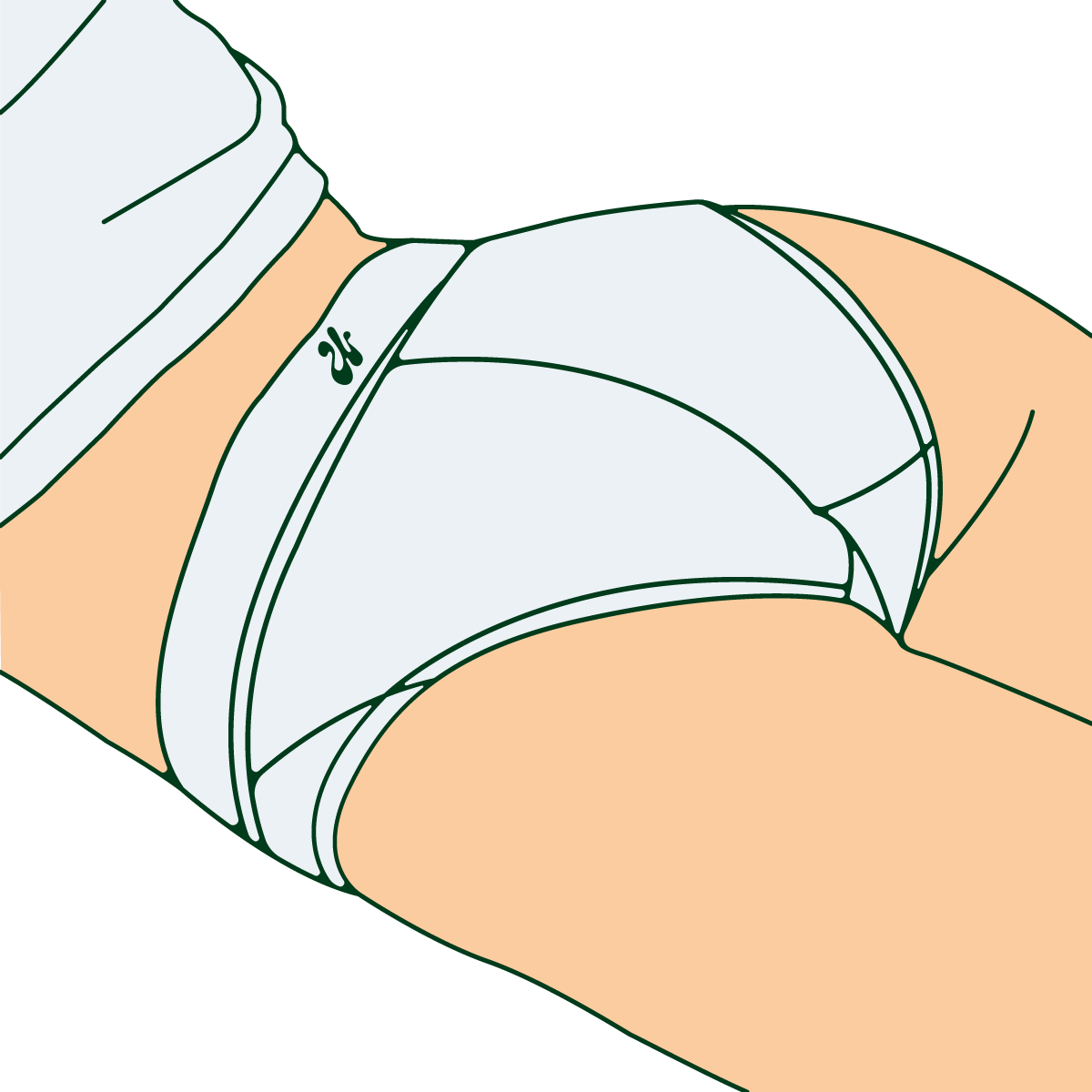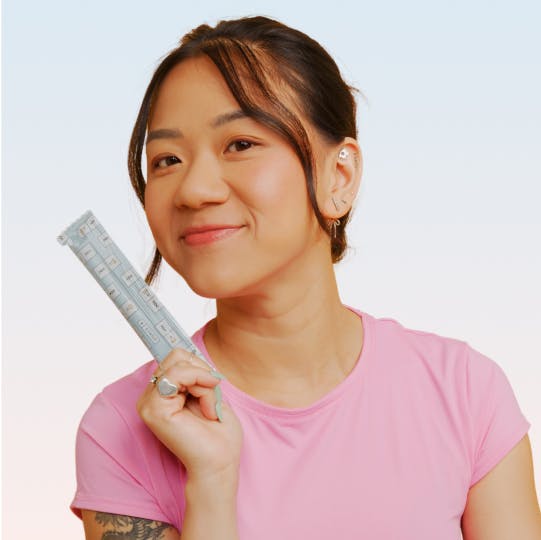Table of contents
1. What is the vaginal microbiome; and how can external factors affect it?
2. Why do we wear underwear?
3. Why should we invest in better underwear?
4. What kind of underwear should women choose?
5. How is Underdays underwear different?
6. Some parting thoughts…
Illustrated by Erin Rommel, Sabrina Bezerra & Ralitza Nikolova.
Be honest. When was the last time you upgraded your underwear? Chances are, it was a lot longer ago than you care to admit. And that’s understandable. Deciding to spend money on buying new women’s underwear is a bit like buying a new lightbulb when you’ve learned to live with one of your ceiling lights not turning on any more; it feels annoying, unnecessary and like a waste of money – especially when there are so many other (far more fun) things you could spend your money on.
Except upgrading your underwear isn’t a waste of money at all; it’s the total opposite. Good quality underwear for women doesn’t just mean forking out for sexy lingerie (though, by all means, go for it); it means investing in your gynae health. It means prioritising your vaginal health; and it means giving your vaginal microbiome a chance to thrive. So, we’ve partnered with top brand Underdays to highlight why top-quality underwear should be at the absolute top of your list.
But first things first…

What is the vaginal microbiome; and how can external factors affect it?
Dr. Betsey Greenleaf DO, MBA, is a board-certified female urogynecologist, CEO of The Pelvic Floor Store and Host of the Happy Vagina Rally women’s wellness summit. “Just like there are many stars in the sky, on a microscopic level we have trillions of bacteria that live on and within the body,” she says. “It is this delicate balance of bacteria that keeps us healthy. A healthy vaginal microbiome helps to keep the proper acid balance that prevents bad bacteria and yeast from invading.”
Why do we wear underwear?
“Underwear was most likely first used in human history as a layer of protection between us and the elements,” explains Greenleaf. “It wouldn’t feel good to sit naked on the ground. Can you imagine where that dirt would go?”
Greenleaf outlines the benefits of underwear for women as including the following:
- “Protection of the genitals”;
- “Absorption of bodily fluids and sweat”;
- “Prevent[s] chafing”;
- “Hold[s] menstrual products or pads”.
Plus, underwear can help protect the rest of your clothing from vaginal discharge. As natural as discharge is, we probably don’t want it seeping into our jeans. Not to mention the support benefits underwear can give us, too; and underwear can help prevent acne by absorbing the substances that can lead to breakouts. Essentially, underwear is pretty great; but it depends on the underwear in question…
Why should we invest in better underwear?
“Investing in good quality underwear is like investing in a good relationship,” says Greenleaf. “It provides comfort, support and boosts your confidence!”.
Underwear in general has the potential to carry a whole tonne of benefits; but how many benefits you and your vaginal microbiome are able to reap really depends on what sort of underwear you’re wearing. “With the advancement in synthetic fabrics, underwear can be made out of anything and everything,” says Greenleaf. “The biggest issue is [that] those cute, sexy, synthetic panties may be doing more harm than good.
“Synthetic fabrics don’t allow air circulation, thus holding in heat and moisture,” Greenleaf continues. “This can also happen with natural fabrics if too many layers are worn at once. You are basically suffocating your [vagina]. Without the ability to breathe, one can start to harbor ‘bad’ bacteria and yeast, throwing off the pH of the vagina.” She explains that this further adds to:
- Itching
- Burning
- Odour
- Infections
“Synthetic fabrics don’t allow air circulation, thus holding in heat and moisture,” Greenleaf continues. “This can also happen with natural fabrics if too many layers are worn at once. You are basically suffocating your [vagina]. Without the ability to breathe, one can start to harbor ‘bad’ bacteria and yeast, throwing off the pH of the vagina.” She explains that this further adds to:
- Itching
- Burning
- Odour
- Infections
So: what sort of women’s underwear should we be upgrading to?

What kind of underwear should women choose?
“The best types of underwear to invest in should have one main factor: breathability,” says Greenleaf. “The healthiest fabrics for underwear are natural, breathable fabrics like[:]
- Cotton
- Bamboo
- And silk.”
An addendum worth noting here, though, is that cotton is great except for when you’re working out – in which case, any other type of underwear that enables moisture wicking (drawing moisture, like sweat, away from the skin) is best.
“These [breathable] fabrics allow air to circulate and prevent moisture build-up, which can reduce the risk of bacterial overgrowth and skin irritation,” Greenleaf explains. “Additionally, natural fabrics tend to be hypoallergenic and less likely to contain chemicals or irritants that can cause allergic reactions or discomfort.
“Natural fibres also have the benefit of being able to be washed at very hot temperatures without damaging the fabric, compared to synthetics,” Greenleaf continues. “It is important to wash underwear in [water that’s as hot] as possible to aid in diluting and killing bacteria that may stick to the fabric.”
Greenleaf adds that you shouldn’t wear a single pair of underwear for more than 24 hours without washing it; though, if you’re exercising or sweating, it’s advisable to change your underwear more regularly than that: “because bacteria can hold onto fabric”. And, speaking of exercising, be mindful that wearing leggings for hours at a time also has the potential to disrupt your vaginal microbiome due to their propensity to allow for a build-up of sweat in the groin.
“
And what about thongs, we hear you ask?
But back to the best underwear for women. One important thing to note is that it’s vital not to underestimate the importance of proper fit and size. As Health.com says: “If a pair [of underwear] doesn’t fit properly, they might seal in the moisture that would typically be wicked away, leading to vaginal infections”. You could go for any of the following (to say the least; this is just a small selection of the options out there), but just make sure you’ve got the right size and that you’re prioritising the most comfortable women’s underwear around:
- Bikini
- Briefs
- Boyshorts
- High rise
- G-string
And what about thongs, we hear you ask? Well, you’d be forgiven for thinking that thongs could adversely affect the vaginal microbiome, due to their structure; but studies have indicated the opposite. One 2018 study analysed ‘Brief vs Thong Hygiene’ and found that “thong use is not associated with [an increased risk of] UTI[s], BV or YV [yeast vaginitis]”; but it’s worth noting that thongs and G-strings have the potential to rub against the internal labia lining, causing irritation. So, it’s best to opt for a thong that isn’t too tight.
We��’ve thrown a lot of information at you here, so let’s wrap up this section with a summary of the best types of material to go for, if you want your gynae health and vaginal microbiome to reap the above benefits:
- Cotton underwear
- Bamboo underwear
- Sustainable underwear (like Miik’s MicroModal Fabric, for example)
- Linen underwear
- In short: natural is best.

How is Underdays underwear different?
The more prescient question is: as women’s underwear brands how is Underdays underwear not different?. For starters, breathability is Underdays’ middle name (and first name, and second name, and surname).
But what’s really important to note is that its underwear is designed with a gynaecologist; so it’s safe to say this particular underwear places your gynae health, wellbeing and comfort before anything else. Take the following as evidence:
- Extended bamboo gusset (the additional layer of fabric in the crotch area, which allows for moisture wicking)
- 10-hour freshness (10 hours! That’s longer than a day at work – we hope)
- Ethical, responsible underwear textiles (all Underdays’ fabrics are independently certified by OEKO-TEX, which essentially means they’re totally free from any dodgy, harmful substances; as well as being responsibly sourced)
- Plus, Underdays is an SME. It’s female founded – just like Daye – and prides itself on being designed by women for womxn. Take the brand’s commitment to menstrual equity, for instance: 1% of all sales are donated to Bloody Good Period, a charity which offers period supplies to refugees, asylum seekers and others who are less able to access them. Gynae health is key, yes – but at Underdays, it’s about gynae health for everyone.
Overall, Underdays self-describes as “a love letter to your body”; and we couldn’t agree more.

Some parting thoughts…
“Investing in good quality underwear can save you hours at the gynaecologist office, long nights of itching and burning and even support your sex drive and fertility,” says Greenleaf: and she pre-empts a ‘What?!’.
“Yes, when the microbiome is off there is a feedback loop through the vagus nerve to the brain,” Greenleaf continues. “Your brain senses things are not right down there and in return decides it is not an ideal time to be reproducing. The consequence is, your brain will dampen all processes of reproduction [...] So, despite those cute, satiny underwear looking sexy, they can be doing more harm than good to your sex life.”
And if that’s not an impetus to invest in sustainable underwear, bamboo underwear, cotton underwear or, frankly, any sort of better-quality women’s underwear: we don’t know what is.






